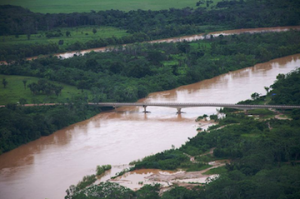I recently wrote up my notes (to share with a fellow graduate student) on how I chose between various personal water filtering options for a field school and fieldwork I’ll be apart of this summer. Please find them below. I hope this is helpful for others as well.
I began by quickly narrowing my options down to two companies–though, I did later find a third viable option, which I’ve included as a footnote below. I was able to do this after talking with several colleagues (who have tried these in Africa, South America, and the American Northwest, among other places) I was dissuaded from going with a ceramic or other hand pump. The biggest drawback to traditional pumps seems to be that they clog too easily and most don’t filter out viruses. Also, they can be a pain to use, since you have to pump while one hose dangles in a river and another sits precariously in a bottle or bucket. Hence, contamination is an issue. The two products/brands I settled on are both purification bottles but they have significantly different initial prices–and significantly different costs/L and flow rates. These include three Katadyn bottles (i.e. the Water Microfilter, Exstream and the new Mybottle) and the Lifesaver Bottle. The Katadyn’s are $35-$50 on Amazon and the Lifesaver is $150 (or $180 for the 6,000 L model).
Katadyn Bottles vs. Lifesaver Bottle
The biggest differences between these are their flow rates, the total volume each can handle per filter, chemical use (or lack thereof), cost/L and dirty filter failsafe. Flow rate matters quite a bit because depending on the turbidity of the water you want to have some excess so that when the filters have been used for a while (or haven’t been flushed for awhile) the filter will still work at a tolerable rate. The Katadyn bottles have initial flow rates of 0.2-0.3 L/min while the Lifesaver is 2.5 L/min. Some of this difference is because you can re-pressurize (i.e. pump-a-little) to increase flow rate when the Lifesaver slows down. To put that into perspective, if you didn’t have to refill, the Katadyn would take 475 min to filter its total 95L volume while the Lifesaver would take just 38 min to filter that same 95L (assuming low turbidity, of course).
Each Katadyn filter can clean 25 gallons or ~95 L (replacement filters are $20 and depending on the models other replacement pieces may be needed). The Lifesaver base model filter cleans 4,000 L (6,000 L for the next step up) and the 4,000 model cartridges cost $99. Iodine is usually fine for most folks but Katadyn says “Persons with iodine allergies, thyroid problems and pregnant women should consult a doctor before using the bottle.” Research indicates that long-term Iodine water purification can lead to thyroid and other problems (see: Backer & Hollowell 2000). Katadyn uses iodine because the filters range from .3-1.0 microns (the Lifesaver filter is .015 microns and the largest water borne virus is about .025 microns). Lifesaver does not use iodine.
The cost/L for the Katadyn at $35/95L is $0.37 while the base Lifesaver at $150/4,000L is $0.0375 or at $180/6,000L is $0.03. The Lifesaver bottle stops working at the end of filter life while Katadyn will keep working and if you’re not paying close attention this is bad because the bottle-cap counter simply restarts the count. There are two to three parts to change on the Katadyn depending on the model while there are two for the Lifesaver. Finally, you’re supposed to only use the Katadyn in an upright position–it doesn’t work if upside down or angled towards, say, your mouth.
Conclusion
I went with the Lifesaver bottle because my water source this summer is highly turbid with lots of silt and sand. That made a flow rate 12.5 times higher than the Katadyn bottles seem very appealing.
Footnote:
Also, check out the Lifestraw (not yet for sale commercially in the U.S.) and the AquaSafeStraw+ and AquaSafeBottle+ (Straw: $70, no chemicals, 1,000L @ $0.07/L, 0.02 micron filter, 0.4L/min, and failsafe; Bottle: $?, Same).


Also worth considering, solar water disinfection:
e.g. http://www.sodis.ch/index_EN